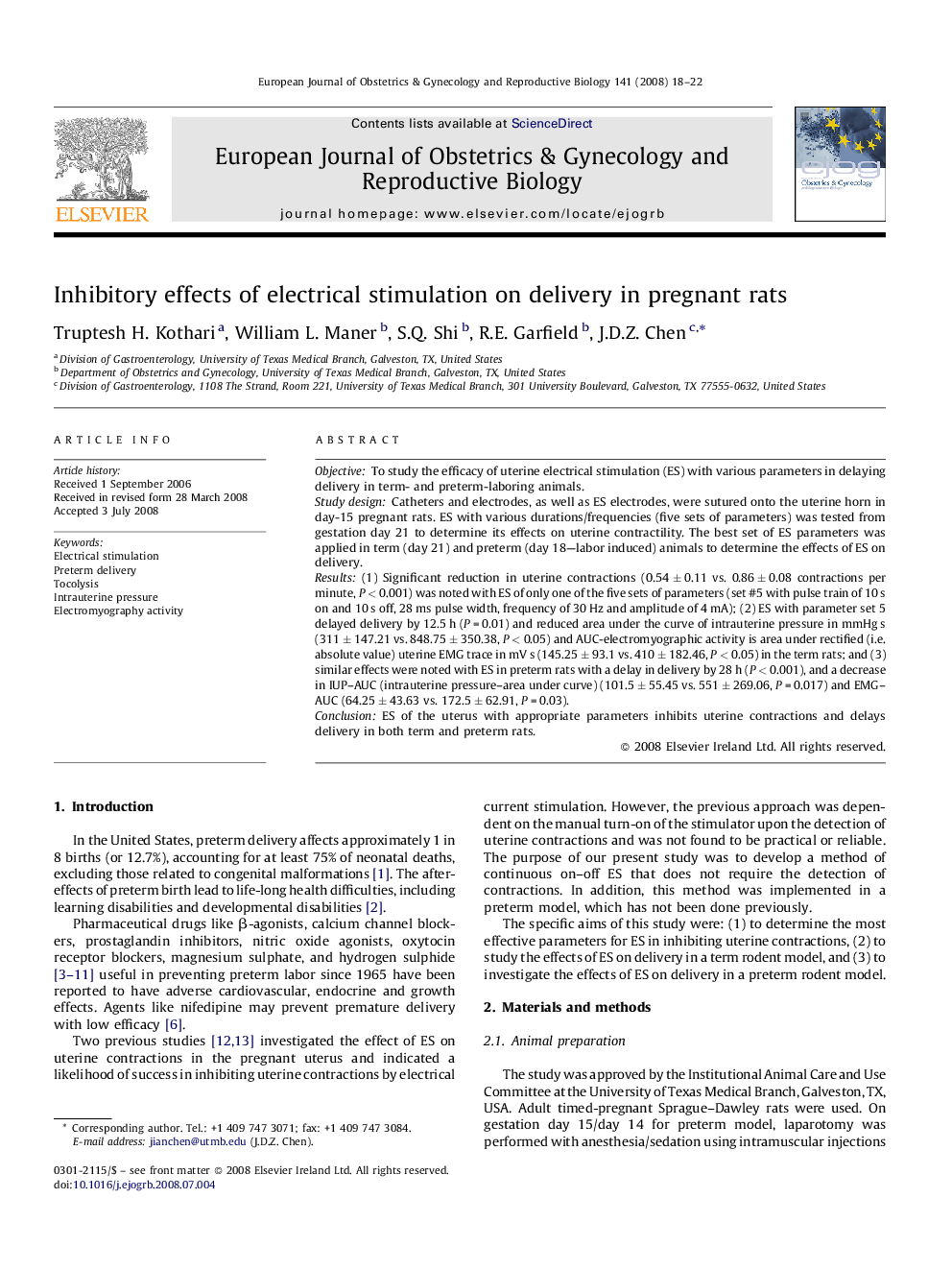| Article ID | Journal | Published Year | Pages | File Type |
|---|---|---|---|---|
| 3921481 | European Journal of Obstetrics & Gynecology and Reproductive Biology | 2008 | 5 Pages |
ObjectiveTo study the efficacy of uterine electrical stimulation (ES) with various parameters in delaying delivery in term- and preterm-laboring animals.Study designCatheters and electrodes, as well as ES electrodes, were sutured onto the uterine horn in day-15 pregnant rats. ES with various durations/frequencies (five sets of parameters) was tested from gestation day 21 to determine its effects on uterine contractility. The best set of ES parameters was applied in term (day 21) and preterm (day 18—labor induced) animals to determine the effects of ES on delivery.Results(1) Significant reduction in uterine contractions (0.54 ± 0.11 vs. 0.86 ± 0.08 contractions per minute, P < 0.001) was noted with ES of only one of the five sets of parameters (set #5 with pulse train of 10 s on and 10 s off, 28 ms pulse width, frequency of 30 Hz and amplitude of 4 mA); (2) ES with parameter set 5 delayed delivery by 12.5 h (P = 0.01) and reduced area under the curve of intrauterine pressure in mmHg s (311 ± 147.21 vs. 848.75 ± 350.38, P < 0.05) and AUC-electromyographic activity is area under rectified (i.e. absolute value) uterine EMG trace in mV s (145.25 ± 93.1 vs. 410 ± 182.46, P < 0.05) in the term rats; and (3) similar effects were noted with ES in preterm rats with a delay in delivery by 28 h (P < 0.001), and a decrease in IUP–AUC (intrauterine pressure–area under curve) (101.5 ± 55.45 vs. 551 ± 269.06, P = 0.017) and EMG–AUC (64.25 ± 43.63 vs. 172.5 ± 62.91, P = 0.03).ConclusionES of the uterus with appropriate parameters inhibits uterine contractions and delays delivery in both term and preterm rats.
